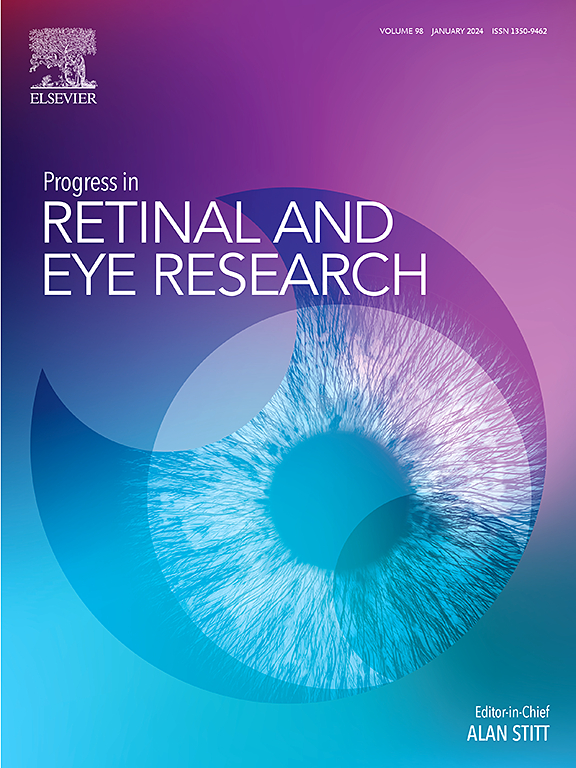AI explainability in oculomics: How it works, its role in establishing trust, and what still needs to be addressed
IF 14.7
1区 医学
Q1 OPHTHALMOLOGY
引用次数: 0
Abstract
Recent developments in artificial intelligence (AI) have seen a proliferation of algorithms that are now capable of predicting a range of systemic diseases from retinal images. Unlike traditional retinal disease detection AI models which are trained on well-recognised retinal biomarkers, systemic disease detection or “oculomics” models use a range of often poorly characterised retinal biomarkers to arrive at their predictions. As the retinal phenotype that oculomics models use may not be intuitive, clinicians have to rely on the developers’ explanations of how these algorithms work in order to understand them. The discipline of understanding how AI algorithms work employs two similar but distinct terms: Explainable AI and Interpretable AI (iAI). Explainable AI describes the holistic functioning of an AI system, including its impact and potential biases. Interpretable AI concentrates solely on examining and understanding the workings of the AI algorithm itself. iAI tools are therefore what the clinician must rely on if they are to understand how the algorithm works and whether its predictions are reliable. The iAI tools that developers use can be delineated into two broad categories: Intrinsic methods that improve transparency through architectural changes and post-hoc methods that explain trained models via external algorithms. Currently post-hoc methods, class activation maps in particular, are far more widely used than other techniques but they have their limitations especially when applied to oculomics AI models. Aimed at clinicians, we examine how the key iAI methods work, what they are designed to do and what their limitations are when applied to oculomics AI. We conclude by discussing how combining existing iAI techniques with novel approaches could allow AI developers to better explain how their oculomics models work and reassure clinicians that the results issued are reliable.
人工智能在经济学中的可解释性:它是如何运作的,它在建立信任方面的作用,以及仍需要解决的问题。
人工智能(AI)的最新发展已经看到了大量算法,这些算法现在能够从视网膜图像中预测一系列系统性疾病。传统的视网膜疾病检测人工智能模型是在公认的视网膜生物标志物上进行训练的,而系统性疾病检测或“眼组学”模型使用一系列通常特征不佳的视网膜生物标志物来进行预测。由于眼组学模型使用的视网膜表型可能不是直观的,临床医生必须依靠开发人员对这些算法如何工作的解释才能理解它们。理解人工智能算法如何工作的学科使用两个相似但不同的术语:可解释的人工智能和可解释的人工智能(iAI)。可解释的人工智能描述了人工智能系统的整体功能,包括其影响和潜在的偏见。可解释的人工智能专注于检查和理解人工智能算法本身的工作原理。因此,临床医生必须依靠人工智能工具来了解算法是如何工作的,以及它的预测是否可靠。开发人员使用的iAI工具可以分为两大类:通过架构更改提高透明度的内在方法,以及通过外部算法解释训练模型的事后方法。目前,post-hoc方法,特别是职业激活地图,比其他技术使用得更广泛,但它们有其局限性,特别是在应用于经济学AI模型时。针对临床医生,我们研究了关键的人工智能方法是如何工作的,它们被设计用来做什么,以及它们在应用于经济学人工智能时的局限性。最后,我们讨论了如何将现有的人工智能技术与新方法结合起来,使人工智能开发人员能够更好地解释他们的经济学模型是如何工作的,并向临床医生保证所发布的结果是可靠的。
本文章由计算机程序翻译,如有差异,请以英文原文为准。
求助全文
约1分钟内获得全文
求助全文
来源期刊
CiteScore
34.10
自引率
5.10%
发文量
78
期刊介绍:
Progress in Retinal and Eye Research is a Reviews-only journal. By invitation, leading experts write on basic and clinical aspects of the eye in a style appealing to molecular biologists, neuroscientists and physiologists, as well as to vision researchers and ophthalmologists.
The journal covers all aspects of eye research, including topics pertaining to the retina and pigment epithelial layer, cornea, tears, lacrimal glands, aqueous humour, iris, ciliary body, trabeculum, lens, vitreous humour and diseases such as dry-eye, inflammation, keratoconus, corneal dystrophy, glaucoma and cataract.

 求助内容:
求助内容: 应助结果提醒方式:
应助结果提醒方式:


